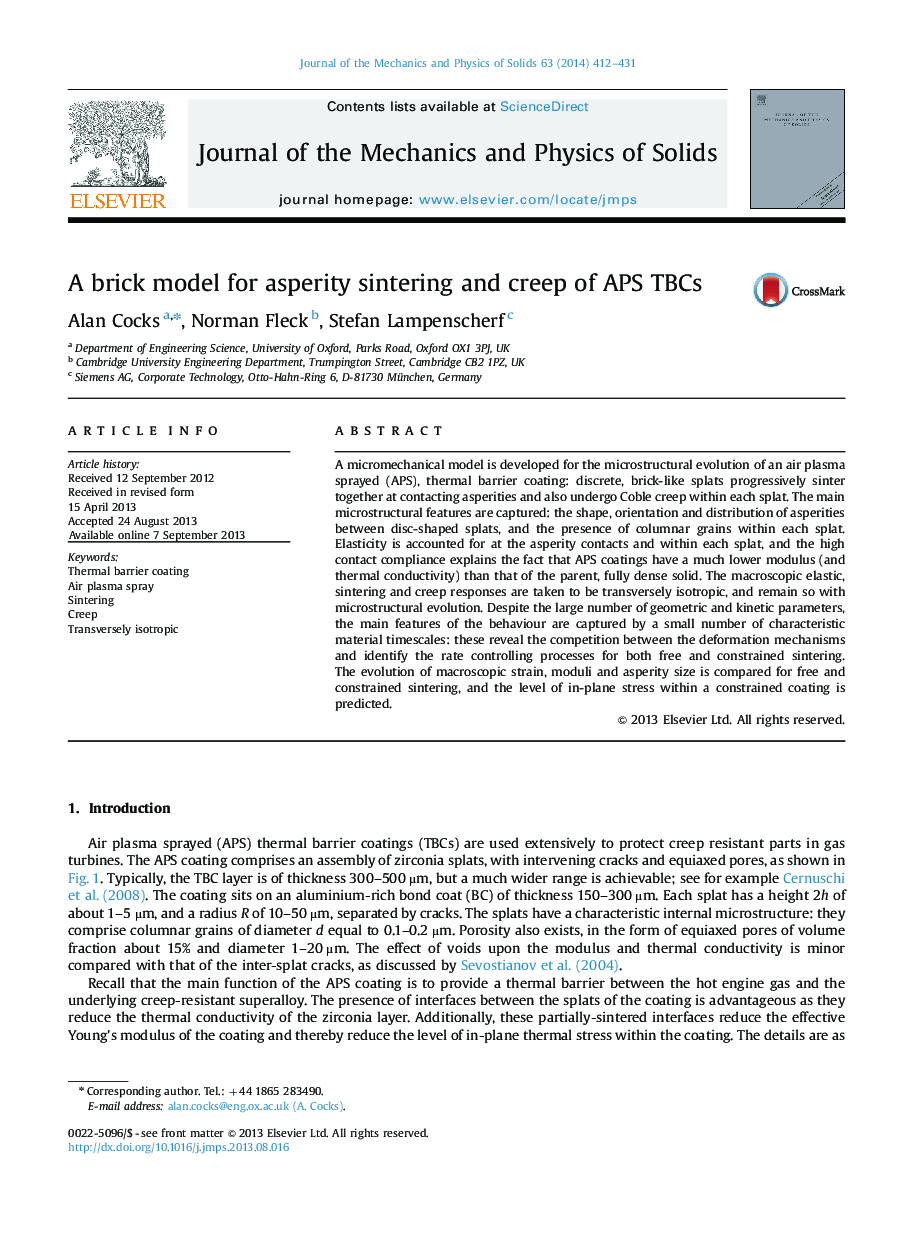| Article ID | Journal | Published Year | Pages | File Type |
|---|---|---|---|---|
| 793153 | Journal of the Mechanics and Physics of Solids | 2014 | 20 Pages |
A micromechanical model is developed for the microstructural evolution of an air plasma sprayed (APS), thermal barrier coating: discrete, brick-like splats progressively sinter together at contacting asperities and also undergo Coble creep within each splat. The main microstructural features are captured: the shape, orientation and distribution of asperities between disc-shaped splats, and the presence of columnar grains within each splat. Elasticity is accounted for at the asperity contacts and within each splat, and the high contact compliance explains the fact that APS coatings have a much lower modulus (and thermal conductivity) than that of the parent, fully dense solid. The macroscopic elastic, sintering and creep responses are taken to be transversely isotropic, and remain so with microstructural evolution. Despite the large number of geometric and kinetic parameters, the main features of the behaviour are captured by a small number of characteristic material timescales: these reveal the competition between the deformation mechanisms and identify the rate controlling processes for both free and constrained sintering. The evolution of macroscopic strain, moduli and asperity size is compared for free and constrained sintering, and the level of in-plane stress within a constrained coating is predicted.
